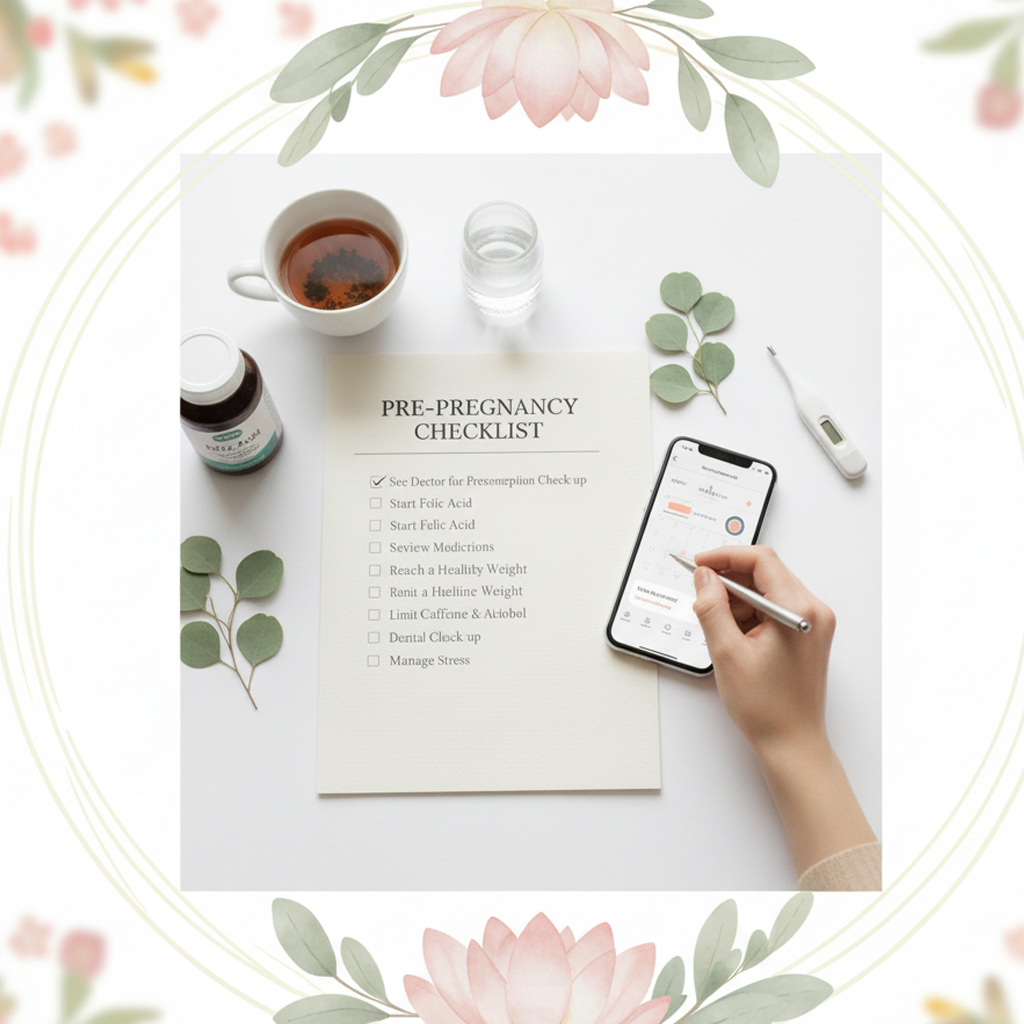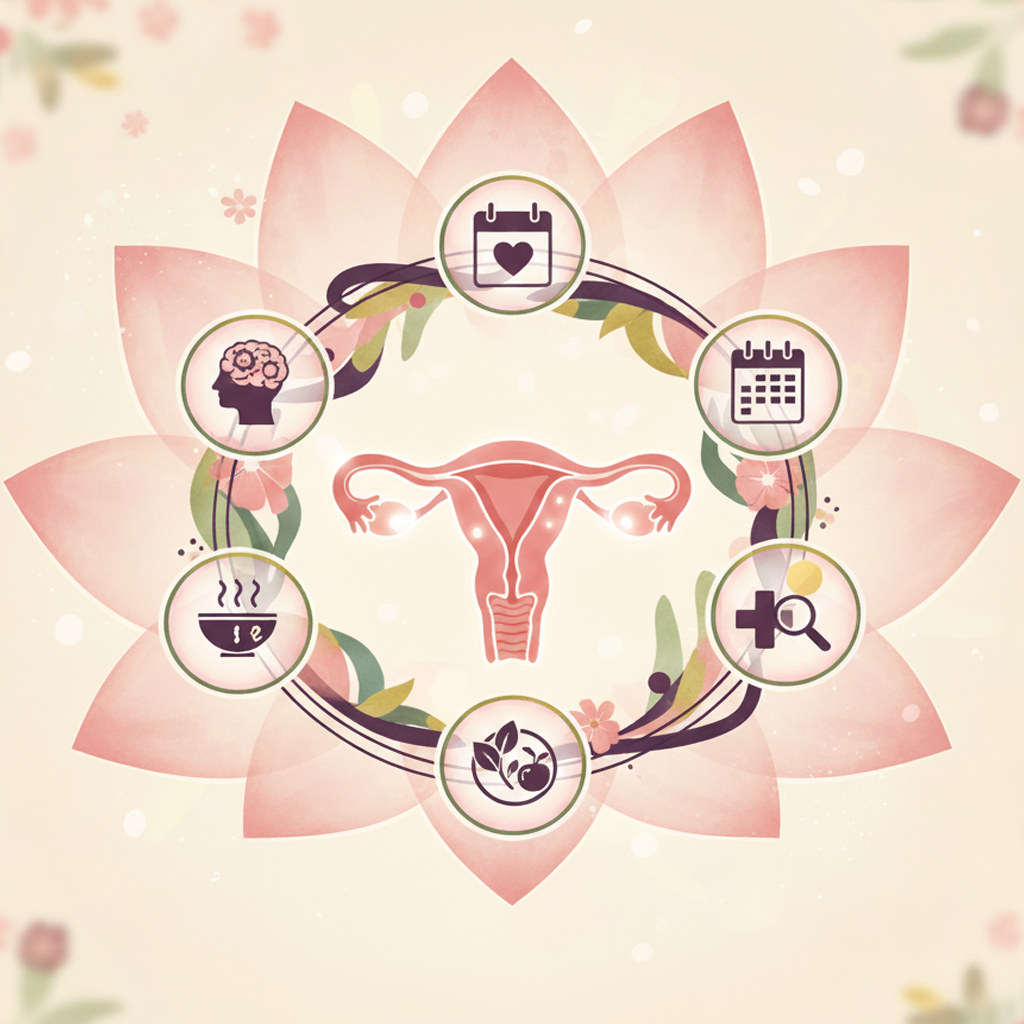Self-Love Affirmations

Self-love affirmations are positive, intentional statements that promote emotional resilience, confidence, and mental well-being during menstruation or pregnancy. By fostering a positive mindset, affirmations can help manage mood swings, reduce stress, and enhance self-esteem. This guide provides practical steps to incorporate affirmations into your daily routine. Always consult a healthcare provider if you experience persistent emotional challenges or signs of anxiety or depression, especially during pregnancy.
1. Understand the Power of Affirmations
-
Purpose: Affirmations reframe negative thoughts, reinforcing self-worth and reducing stress-related impacts on menstrual cycles or pregnancy.
-
Benefits: Improves mood, lowers cortisol levels, and supports emotional balance during hormonal fluctuations (e.g., PMS, pregnancy).
-
When to Use: Ideal during menstruation for managing mood swings or pregnancy for addressing body image changes and anxiety.
-
Goal: Builds a positive mindset to navigate physical and emotional changes with confidence.
2. Create Personalized Affirmations
-
Guidelines:
-
Use positive, present-tense statements (e.g., “I am strong and capable”).
-
Keep them short, specific, and meaningful to your needs.
-
Focus on self-acceptance, resilience, or health (e.g., “My body is nurturing a healthy pregnancy” or “I embrace my cycle with ease”).
-
-
Examples:
-
Menstruation: “I honor my body’s natural rhythm and care for myself with kindness.”
-
Pregnancy: “I trust my body to nurture my baby with strength and love.”
-
General Self-Love: “I am worthy of love and care, exactly as I am.”
-
-
Purpose: Tailors affirmations to your unique emotional and physical experiences for maximum impact.
3. Incorporate Affirmations into Your Routine
-
Morning Boost:
-
Say 3–5 affirmations aloud or silently while looking in a mirror for 2–5 minutes each morning.
-
Pair with deep breathing to enhance relaxation.
-
-
Midday Reset:
-
Repeat affirmations during a break or stressful moment to refocus (e.g., before a work meeting or when feeling overwhelmed).
-
-
Evening Reflection:
-
Write or recite affirmations before bed to promote calm and improve sleep quality.
-
-
Tips:
-
Post affirmations on sticky notes in visible places (e.g., bathroom mirror, workspace).
-
Use a notebook or digital reminder system to track affirmations and reflect on their effects.
-
-
Purpose: Integrates affirmations into daily life for consistent emotional support.
4. Track Affirmation Practice and Emotional Impact
-
Action: Log in a notebook or digital reminder system:
-
Affirmations used (e.g., “I am strong and capable”).
-
Timing and frequency (e.g., morning, evening).
-
Emotional outcomes (e.g., “Felt calmer after morning affirmations”).
-
Related symptoms (e.g., PMS mood swings, pregnancy anxiety) to monitor patterns.
-
-
Tracking Tips:
-
Note mood changes or stress levels before and after affirmations.
-
Track for 3–6 cycles or throughout pregnancy to assess long-term benefits.
-
-
Purpose: Helps evaluate effectiveness and identify emotional triggers for discussion with a healthcare provider.
5. Combine with Other Stress-Relief Techniques
-
Deep Breathing: Pair affirmations with 5-minute deep breathing sessions (inhale for 4 seconds, exhale for 6) to enhance relaxation.
-
Gentle Movement: Recite affirmations during light stretching or prenatal yoga (if pregnant) to connect mind and body.
-
Journaling: Write affirmations in a journal alongside thoughts or gratitude lists to deepen self-reflection.
-
Purpose: Amplifies the emotional benefits of affirmations by integrating physical and mental relaxation.
6. Involve Your Support System
-
Partner or Loved Ones:
-
Share affirmations with your partner or family to encourage mutual support (e.g., they can remind you of affirmations during stressful moments).
-
Discuss emotional needs to foster understanding, especially during PMS or pregnancy.
-
-
Community:
-
Join local or online groups for menstruating individuals or expectant parents to share positive affirmations and experiences.
-
-
Purpose: Strengthens emotional connections and reinforces self-love through shared encouragement.
7. Know When to Seek Professional Support
-
Warning Signs:
-
Persistent feelings of worthlessness, anxiety, or sadness that affirmations don’t alleviate.
-
Severe mood swings during menstruation or pregnancy that disrupt daily life.
-
Signs of depression (e.g., loss of interest, constant fatigue) or anxiety (e.g., excessive worry).
-
-
Action: Consult a healthcare provider if emotional challenges persist or worsen, especially during pregnancy or if you have a history of mental health concerns.
-
High-Risk Pregnancies: If you have conditions like gestational diabetes or preeclampsia, discuss stress and emotional health with your provider, as they may impact pregnancy.
-
Purpose: Ensures timely intervention for mental health concerns that require professional care.
Benefits
-
Emotional Resilience: Boosts self-esteem and reduces negative self-talk during hormonal changes.
-
Stress Reduction: Lowers cortisol, supporting cycle regularity and pregnancy health.
-
Positive Mindset: Enhances confidence and emotional well-being for menstruation or parenthood.
Practical Tips
-
Affirmation Creation: Write 3–5 affirmations tailored to your needs (e.g., addressing body image during pregnancy or PMS irritability). Update them monthly as emotions evolve.
-
Tracking Tools: Log affirmations and mood in a journal (e.g., “Day 5: ‘I am calm,’ felt less anxious after 5-min session”). Include cycle or pregnancy symptoms for context.
-
Routine Integration: Set a phone reminder for daily affirmation practice (e.g., 7 AM or 9 PM) to build consistency.
-
Environment Setup: Practice affirmations in a calming space with dim lighting or soft music to enhance focus.
-
Supportive Nutrition: Pair affirmations with a balanced diet (e.g., magnesium-rich foods like bananas) to support mood stability.
-
Partner Involvement: Share affirmations with your partner for mutual encouragement (e.g., recite together during a walk).
Actionable Next Steps
-
Today: Write 3–5 self-love affirmations and practice them for 2–5 minutes in front of a mirror. Choose a tracking tool to log your practice.
-
This Week: Incorporate affirmations into your morning or evening routine. Note emotional changes in your log.
-
Next 3–6 Cycles or Trimesters: Track affirmation use and emotional outcomes consistently. Adjust affirmations as needed to reflect your needs.
-
Ongoing: Consult a healthcare provider if emotional challenges persist or worsen, especially during pregnancy.
Related Articles

Week 5 - Heartbeat Begins

Pre-Pregnancy Checklist

Cycle Start Guide

Week 11 - Gender Differentiation

Week 35 - Preparation for Birth

Week 18 - Hearing Develops

Week 17 - Fat Layers Develop

Week 19 - Muscle Development